Originally, I wrote an intro about why I wanted to do a piece on Soul Train.
I talked about Saturday mornings, sitting six inches from the TV with a mixer bowl full of Boo Berry Punch Crunch, watching Captain Redneck Dick Murdoch strut through the Superdome with the Junkyard Dog, doing the funky chicken to “Another One Bites the Dust”, battling the Masked Assassins for the tag team belts.
I waxed nostalgic about how Mid South Wrestling segued straight into Soul Train and a second round of Punch Crunch while I watched David Bowie and the Bar Kays surrounded by an army of pop-locking robots, MC’d by the King of Cool, Don Cornelius with his velvet baritone and fly suits wishing us love, peace and soul….
But that intro turned out way too long….
I want to do a piece about Soul Train because I grew up seriously loving Soul Train.
There’s a new book out from writer Ericka Blount Danois and Backbeat Press that tells the story of the television phenomenon born in the land of bell bottoms, afros, and soul power—a celebratory, behind-the-scenes collection of anecdotes, stories, and reflections, from the people who were there, about the host, the show, and the power of black music and dance on television.
So I called the author up to take a little trip back on the Sooooul… Train.
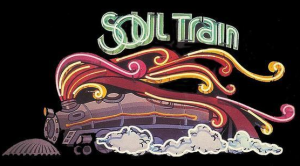 What made you want to write about the legacy of Soul Train?
What made you want to write about the legacy of Soul Train?
As a music writer and as a fan, I wondered what happened to one of my favorite shows. I began searching for some of the dancers and writing a light-hearted Where Are They Now? column. But in finding former dancers I started to discover this really unique history about the show. I learned that Fred Astaire watched Soul Train so that he could learn new dance moves, that one of the dancers, Damita Jo Freeman, went on to choreograph for Cher and Mick Jagger and danced for the Queen of England. I learned that the show was the longest running first-run syndicated show in history and that Don Cornelius had sole ownership. What started out as a fun story became a project on music and cultural history, American history, a fantastic business story, a story about the global impact of dance…. It really started to just write itself.
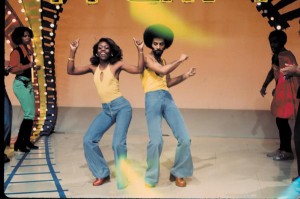 The dancers were the secret of Soul Train’s success.
The dancers were the secret of Soul Train’s success.
The dancers definitely had the most enduring story. These were kids that ultimately became the face of the show, but never got paid. (They did get a KFC box lunch) I talked to dancers who paid out of their own pocket to travel from New York to Los Angeles every other week to be on the show. James Brown hired some of them for his tour. Marvin Gaye infamously mentions a tryst with a Soul Train dancer in the song, “After the Dance.” Everybody has their favorite dancer from the show, whether it was the long-haired Asian dancer, Cheryl Song, or Patricia “Butterfly” Davis. Whenever people hear about the book, that’s the first thing they ask—“Well, did you meet [fill-in-the-blank] dancer?
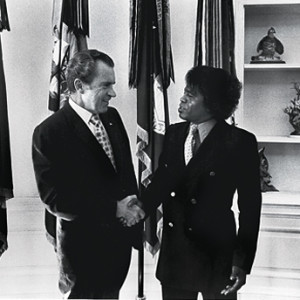 I love that you mention that great James Brown quote: “The one thing that can solve most of our problems is dancing.”
I love that you mention that great James Brown quote: “The one thing that can solve most of our problems is dancing.”
Al Sharpton told me James and Don fought like an old married couple, but were very close and had a lot of respect for each other. James was immensely important to the show and Don devoted an hour-long episode to him once. Every time Don asked him to come he did. Many other artists—once they went mainstream—looked at Soul Train as more of a stepping stone than a destination. James Brown always stayed true and his presence helped catapult Soul Train to huge success.
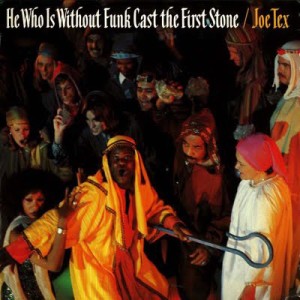 What about that gunfight JB had with Joe Tex in a nightclub?
What about that gunfight JB had with Joe Tex in a nightclub?
Those two had an epic rivalry, really just an old-fashioned macho competition that included music, women… and sometimes gunplay. They made up later.
My wife was a dancer/choreographer and loved all the history in the book – learning that locking was invented by a guy who couldn’t dance, that Soul Train‘s Jeffrey Daniel taught Michael Jackson to moonwalk and that Toni Basil, in some ways, broke in through the show.
Stories seemed to always come around to the dancers. Just so much under appreciated talent. The moonwalk was actually called the backslide. Toni and Don “Campbelllock” Campbell were in the Lockers together.
Don always seemed removed from the dancers, a little too cool to dance….
Yes! The dancers talked about that. Many of them saw Don as a father figure, but he was aloof, always concerned about business and didn’t deal with them much. He had a policy that dancers weren’t allowed to mingle with the artists or the staff. By the same token, Cornelius was all about business and didn’t see himself so much as a role model to these teens. But Don did come down the Soul Train line once with Mary Wilson. He came down smooth, in the way only someone from Chicago could come down smooth. Then he tried to do the JB split and fell. They edited out the fall and he never came down the line again.
How would you explain Don Cornelius to a person who has never seen the show?
Chuck D told me that Don was like that favorite uncle you think is cool, but then he insists you take your feet off of his coffee table. He really had this Chicago cool persona—the clothes, the smooth voice, the rap, the intelligence—but he was a very complicated person. Someone with deep wounds from childhood, issues with addiction. He was funny and down-to-earth, but then could be stand-offish. I think he became trapped by the persona he created. When I met him in real life, he was brash, irreverent—sometimes in an awkward way rather than clever or witty. He seemed bitter. But he was still styling with the full leather outfit and alligator shoes. I think until the very end he would have been someone you would want to party with, but wouldn’t want to marry.
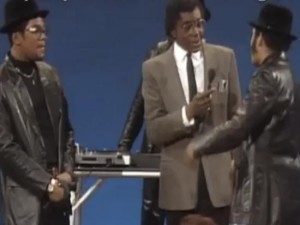 How did Soul Train factor into the birth of Hip Hop?
How did Soul Train factor into the birth of Hip Hop?
Don was averse to hip-hop music. He didn’t understand it as many in the black middle class at the time didn’t and to some extent still don’t. But all of the hip hop artists I talked to looked at performing on Soul Train as proof that they had arrived. Kurtis Blow talked about how he had been successful abroad and toured with the Clash, but after his appearance on Soul Train he couldn’t walk down the street without bodyguards. Chuck D talked about how Soul Train catapulted Public Enemy to a mainstream audience. Big Daddy Kane talked about how he was so influenced by the episode where Al Green sang with his arm in a sling, he performed with a broken arm himself after a motorcycle accident in homage to Al. Soul Train was the first television appearance for many hip hop artists.
Name some classic Soul Train performances we should check out online.
Start with the Al Green clip, singing “Jesus is Waiting” with the broken arm. It’s just mesmerizing. I saw him at his church in Memphis recently and he is still as electrifying today.
For the sports junkies: the one where the starting line-up for the Lakers, including Magic Johnson dance with the Soul Train dancers.
The episode where Richard Pryor hosts the entire show and performs some material (edited for television) from his album, That Nigger’s Crazy.
Any episode with Rufus featuring Chaka Khan, The Jackson Five, James Brown, Patti LaBelle or Aretha Franklin.
The hour-long episode at Barry White’s estate. He sang “Ecstasy” poolside with Love Unlimited.
The National Dance contests where they flew kids in from all over the country to compete. Walter Payton was a dancer on one of these episodes. OJ Simpson was a judge.
You attended Don’s funeral a few years back. What was that like?
Interesting. Don and Whitney Houston died within a little over a week of each other. Donnie McClurkin was going straight from the Cornelius funeral to preside over Whitney’s. I think a lot of people were still in shock that we had lost these two icons back-to-back. It wasn’t as well attended as I expected it to be for what he had done for the music industry. I was surprised that celebrities like Quincy Jones and other business giants in the music industry weren’t there, but I imagine they paid their respects privately to the family.
I’m not quite sure how to address Don’s suicide – I understand the community stigma but it seems he had been in a lot of pain for a very long time. You feel compassion for Don Cornelius – who doesn’t always come off as a good guy, you know?
I do know. I had a friend that likened it to Hunter Thompson, in the way that Hunter wanted to control the way he died as much as he did the way he lived. With Cornelius’s insistence on perfection at every level, I can see that as being a part of it. Health issues, a bitter divorce, loneliness, and just old age and not being able to enjoy the things that you once did can contribute to that sense of hopelessness. I struggled with that a long time and talked to many people close to Don about it. Particularly the violent way he chose to end it. I am still struggling for answers, as I am sure everyone is — particularly since he didn’t leave a note.
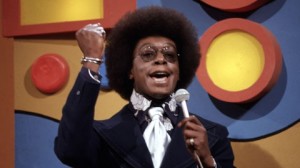 How did Soul Train change the world?
How did Soul Train change the world?
Soul Train gave validation to ordinary teens and gave their talents a national platform. Black dance hasn’t been given its due—financially or critically. These dancers were elevated to the status of artists. Musical guests were given a platform where there wasn’t one. Don also had artists, actors, politicians, authors, and comedians on the show and he gave them a break and a platform. I’ve talked to many people who said Soul Train changed their lives—that it gave them an opportunity to see undiluted black culture, music, activists and celebrities for the first time on television. The show endured so long because everybody, all demographics, were watching. They wanted to see more than the negative images of black people that were dominating the 6 o’clock news. Don Cornelius documented what was going on in the culture from the early ‘70s until the mid-2000s. You could teach a history class and figure out where we were as a country from watching Soul Train. We haven’t had a show like it since.
(Check out Ericka’s book Love, Peace & Soul: Behind the Scenes of America’s Favorite Dance Show Soul Train: Classic Moments here.)
http://open.spotify.com/user/joed_sandiego/playlist/5KPqTBAEgddOFuh8JpFxWo

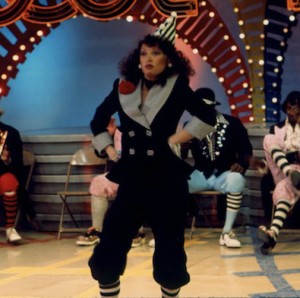


We are now officially a website–a Soul Train essay legitimizes us.
To hold that legitimacy, we should
stick with Soul Train essays
from here on out.
I think.
Pingback: Love, Peace & Sooooul… Train! A Conversation with Ericka Danois on the Hippest Show in Television History - The Good Men Project